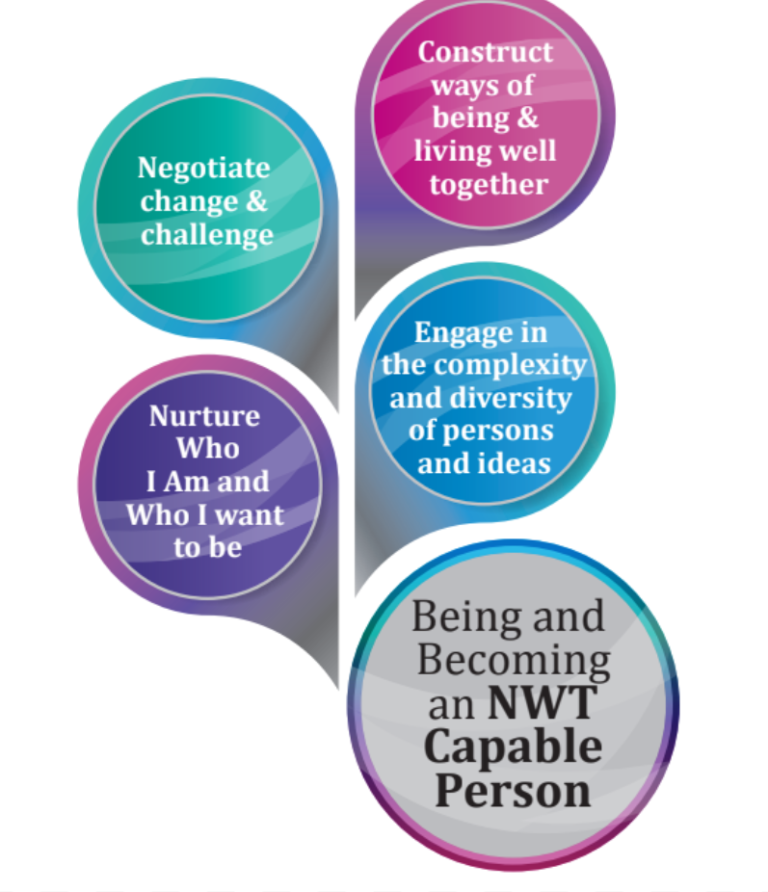Guiding Understandings
A capable person described in Elders’ teachings reminds us that all children are born capable. Everyone is born with gifts, skills, and talents. It is our collective responsibility to provide opportunities for students to strive in being and becoming a capable person.
In the Dene Kede curriculum, capable people are defined as the “ones who had integrity in their relationships with the spiritual world, the land, other people and themselves (Dene Kede, 1993a, p. xiv).
In Inuuqatigiit, the concept of a capable person is aligned with the concept of “a good person.” Inuit Elders explain that “being good” means you have “self-respect, patience, and strength; you share and are understanding and respectful of others; and you are humble, honourable, and respectful of the laws that govern society and the natural and spiritual worlds. As you grow in experience, you are to strive towards wisdom, honouring the Elders who had achieved this (Inuuqatigiit, 1996, p. 32)
The Elders also teach that there are two worldviews that exist in the NWT: the Indigenous and the Western worldviews. Both have strengths and exist in an interconnected relationship, which affords a more complete understanding of the world…The concept of a capable person requires education systems to balance the Indigenous and Western ways of teaching and learning.
Taken directly from Indigenous Languages & Education Handbook, 2021, p. 10-11)
Activity
For younger grades, before the activity, have a brief discussion about what the word capable means.
Part 1
- Split your class into small groups (3-4 students)
- Give each group a piece of chart paper with the words capable person in the Community outside of the school (this could be in your family, culture, and friend group)
- Give students approximately 10 minutes to come up with as many ideas as they can as to what being a capable person at school looks like (they can use words, pictures, symbols, etc..)
- Have students put their paper on the wall and discuss their thoughts with the class
Note: If you have students who are anxious about working in groups, you can have them work independently at their desk. They can write their thoughts down on a post-it note and put them on a chart that you have chosen for them.
Part 2
- Have students get into pairs
- Provide them with the a sheet of paper for them to write their thoughts about what being a capable person in the school looks like
- They can write down words or draw pictures to display their thinking
- Give students about 5-10 minutes to flesh out their thoughts
- Then, lead a class discussion on what each pair came up with
- Finally, as a class, create a set of action steps/goals on what students and teachers can do to become capable people in the school and within their unique communities outside of the school, this list should be made visible for the class throughout the year.
- Using the student ideas as a guide, make a set of goals and action steps to include in your classroom community’s journey of becoming capable
Ideas: Take photos throughout the year and encourage students to send you photos of them doing these activities and pursuing their goals of becoming capable.
Part 3 – Land and Community Connection:
Ask your students and your SA to think of activities outside that your class can do that relate to some of the ways you’ve identified that you are all capable
Some Ideas:
- Go for a nature walk and identify local plants
- Go for a walk around the community and have your class be your tour guide
- As a class, participate in a community/ school beautification project
- As a class, find a place to reflect and enjoy the land within the community
- As a class, find a place to have a snack outside
- As a class, learn a new skill or nurture an existing capability from a community member
If students and SAs need support to think of something- ask your principal to help you connect with an Elder or community guest that is willing and able to take you and your class on a tour of the community



